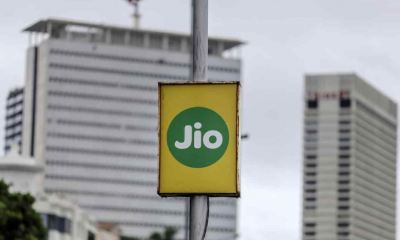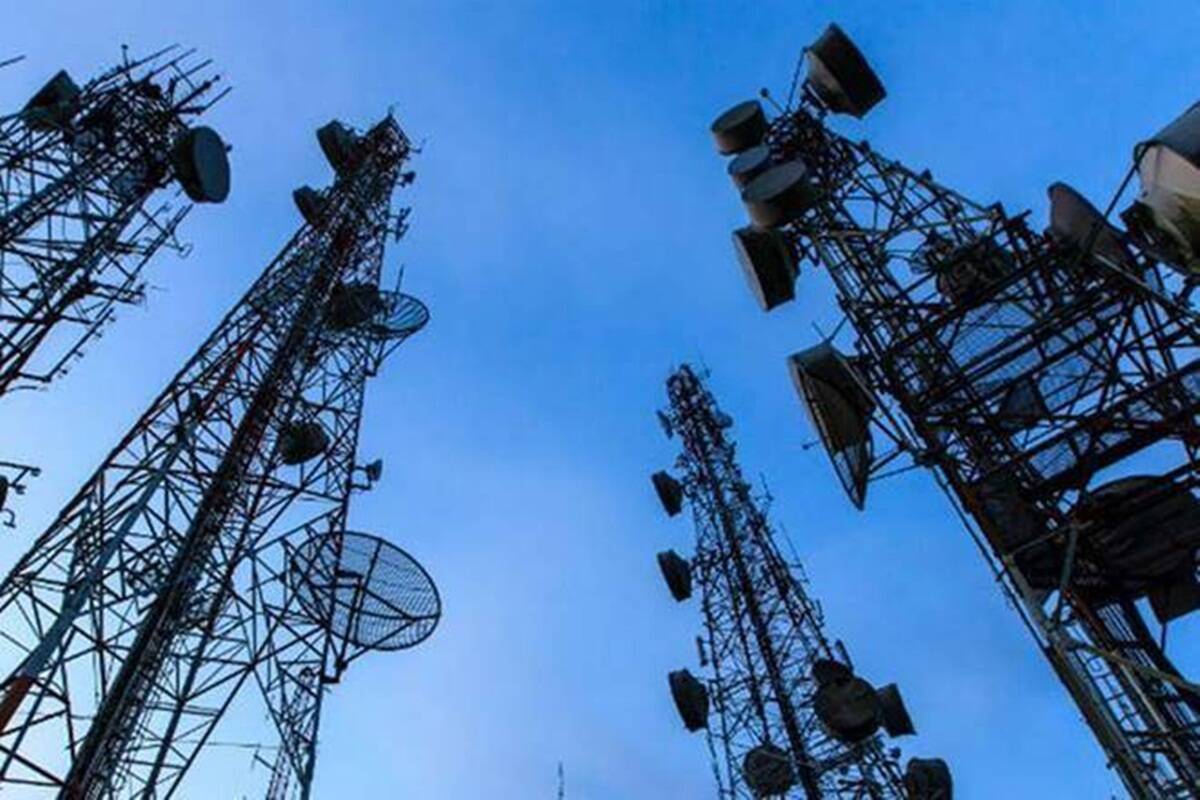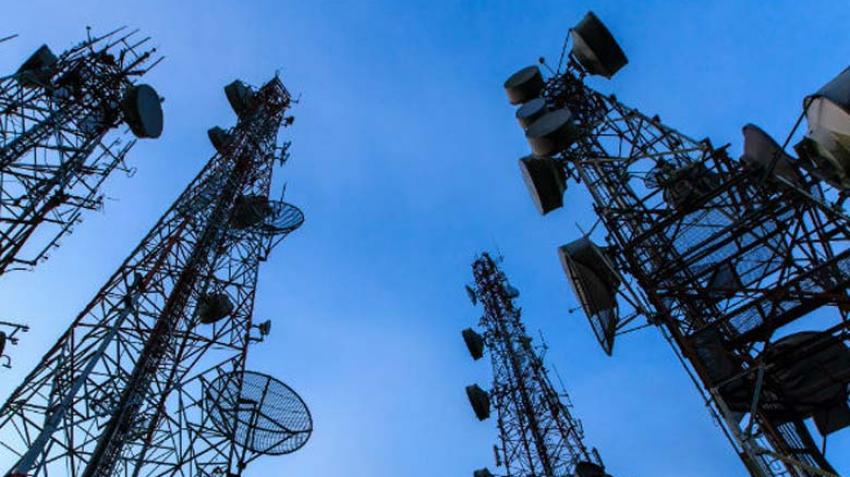Mobile Services
DoT unveils draft National Telecom Policy
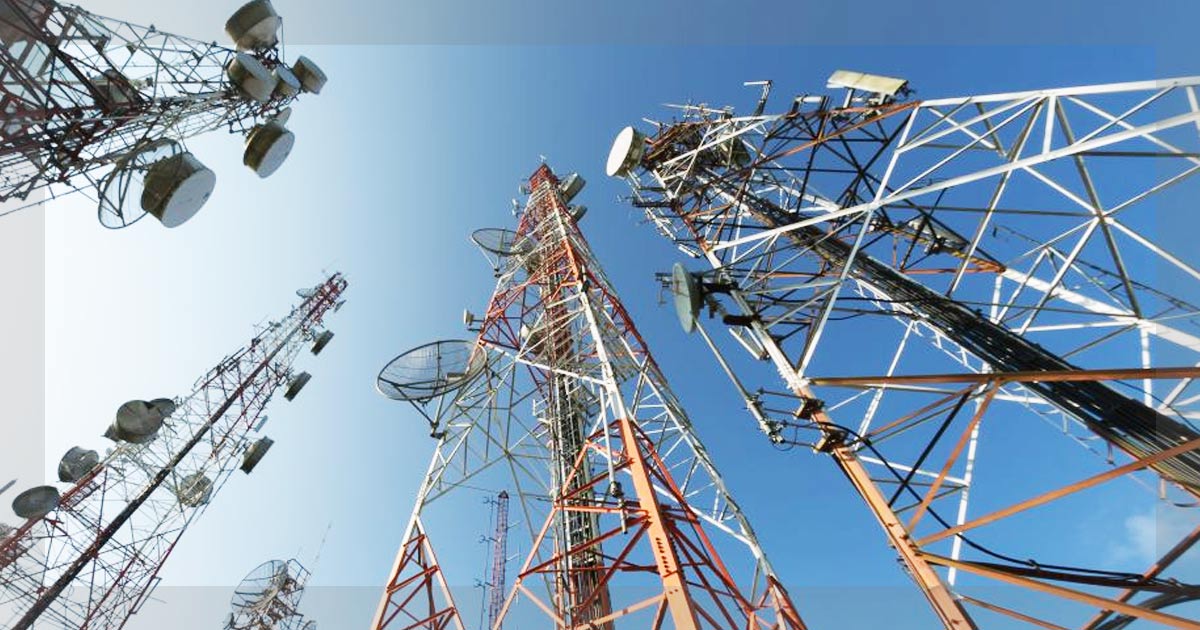
 NEW DELHI: The Department of Telecommunications (DoT) late on Tuesday launched the draft of the The National Communications Policy 2018 for public consultation.
NEW DELHI: The Department of Telecommunications (DoT) late on Tuesday launched the draft of the The National Communications Policy 2018 for public consultation.
The objective of this document is to lay out a policy and principles framework that will enable creation of a vibrant competitive telecom market to strengthen India’s long term competitiveness and serve the needs of our aspiring nation. It has been broadly estimated that a 10% increase in broadband penetration in a country could potentially lead to an over 1% increase in GDP. However, studies in India estimate that the impact could be significantly higher for the country, given the increased productivity and efficiency gains that are likely to accrue to the economy.
Currently, India has approximately 1.5 million kilometres of OFC, and less than one-fourth of the towers are fibre-connected. In order to expand mobile and broadband connectivity across the country, it is necessary to explore and utilise the opportunities presented by next- generation-networks like 5G and other pioneering network access technologies including satellite communications. It would be critical to focus on fixed infrastructure development initiatives related to fibre deployment and Right of Way clearances that will form the bedrock of next generation technologies.
The objective of a national policy on digital communications is to prepare the country and its citizens for the future. Achieving these goals would require that the key stakeholders – namely the Centre, the States, local governments and agencies, Telecom Service Providers, Internet Service Providers, handset and equipment manufacturers, the academic community, the innovators and start-ups come together to forge a coalition to deliver this national policy and its missions.
The National Digital Communications Policy, 2018
The National Digital Communications Policy, 2018 seeks to unlock the transformative power of digital communications networks – to achieve the goal of digital empowerment and well being of the people of India; and towards this end, attempts to outline a set of goals, initiatives, strategies and intended policy outcomes.
The National Communications Policy aims to accomplish the following Strategic Objectives by 2022:
1.Provisioning of Broadband for All
2.Creating 4 Million additional jobs in the Digital Communications sector
3.Enhancing the contribution of the Digital Communications sector to 8% of India’s GDP from ~ 6% in 2017
4.Propelling India to the Top 50 Nations in the ICT Development Index of ITU from 134 in 2017
5.Enhancing India’s contribution to Global Value Chains
6.Ensuring Digital Sovereignty
Vision
To fulfil the information and communication needs of citizens and enterprises by establishment of a ubiquitous, resilient, secure and affordable Digital Communications Infrastructure and Services; and in the process, support India’s transition to a digitally empowered economy and society.
Missions
In pursuit of accomplishing these objectives by year 2022, the National Digital Communications Policy, 2018 envisages three Missions:
1. Connect India: Creating Robust Digital Communications Infrastructure
To promote Broadband for All as a tool for socio-economic development, while ensuring service quality and environmental sustainability.
2.Propel India: Enabling Next Generation Technologies and Services through Investments, Innovation and IPR generation
To harness the power of emerging digital technologies, including 5G, AI, IoT, Cloud and Big Data to enable provision of future ready products and services; and to catalyse the fourth industrial revolution (Industry 4.0) by promoting Investments, Innovation and IPR.
3. Secure India: Ensuring Sovereignty, Safety and Security of Digital Communications
To secure the interests of citizens and safeguard the digital sovereignty of India with a focus on ensuring individual autonomy and choice, data ownership, privacy and security; while recognizing data as a crucial economic resource.
1.Connect India: Creating a Robust Digital Communication Infrastructure 2022 Goals:
a.Provide Universal broadband coverage at 50 Mbps to every citizen
b.Provide 1 Gbps connectivity to all Gram Panchayats of India by 2020 and 10 Gbps by 2022
c.Enable 100 Mbps broadband on demand to all key development institutions; including all educational institutions
d.Enable fixed line broadband access to 50% of households
e.Achieve ‘unique mobile subscriber density’ of 55 by 2020 and 65 by 2022
f.Enable deployment of public Wi-Fi Hotspots; to reach 5 million by 2020 and 10 million by 2022
g.Ensure connectivity to all uncovered areas
Strategies:
1.1Establishing a ‘National Broadband Mission – Rashtriya Broadband Abhiyan’ to secure universal broadband access
(a)Implementation of the following broadband initiatives, to be funded through USOF and Public Private Partnerships:
i.BharatNet – Providing 1 Gbps to Gram Panchayats upgradeable to 10 Gbps
ii.GramNet – Connecting all key rural development institutions with 10 Mbps upgradeable to 100 Mbps
iii.NagarNet – Establishing 1 Million public Wi-Fi Hotspots in urban areas
iv.JanWiFi – Establishing 2 Million Wi-Fi Hotspots in rural areas
(b)Implementing a ‘Fibre First Initiative’ to take fibre to the home, to enterprises and to key development institutions in Tier I, II and III towns and to rural clusters:
i.According Telecom Optic Fibre cables the status of Public utility
ii.Promoting collaboration models involving state, local bodies and private sector as necessary for provision of shared duct infrastructure in municipalities, rural areas and national highways
iii.Facilitating Fibre-to-the-tower programme to enable fiberisation of at least 60% base stations thereby accelerating migration to 4G/5G
iv.Leveraging existing assets of the broadcasting and power sector to improve connectivity, affordability and sustainability
v.Incentivising and promoting fibre connectivity for all new developmental construction
vi.By making requirement for telecom installations and the associated cabling and in-building solutions mandatory in in all commercial, residential and office spaces by amending National Building Code of India (NBC), through Bureau of Indian Standards (BIS)
(c)Establishment of a National Digital Grid by:
i.Creating National Fibre Authority
ii.Establishing Common Service Ducts and utility corridors in all new city and highway road projects, and related elements
iii.Creating a collaborative institutional mechanism between Centre, States and Local Bodies for Common Rights of Way, standardisation of costs and timelines; and removal of barriers to approvals
iv.Facilitating development of Open Access Next Generation Networks
(d)Facilitate the establishment of Mobile Tower Infrastructure by:
i.Extending incentives and exemptions for the construction of telecom towers
ii.According accelerated Rights of Way permissions for telecom towers in government premises
iii.Promoting deployment of solar and green energy for telecom towers
(e)Improve international connectivity and reduce the cost of international bandwidth by facilitating setting up of International Cable Landing Stations by rationalising access charges and removing regulatory hurdles
i.Encourage sharing of active infrastructure by enhancing the scope of Infrastructure Providers (IP) and promoting deployment of common sharable, passive as well as active, infrastructure;
(f)Enabling Infrastructure Convergence of IT, telecom and broadcasting sectors:
i.Amending the Indian Telegraph Act, 1885 and other relevant acts for the purpose of convergence in coordination with respective ministries
ii.Establishing a unified policy framework and spectrum management regime for broadcast and broadband technologies
iii.Restructuring of legal, licensing and regulatory frameworks for reaping the benefits of convergence
(g)Creating a Broadband Readiness Index for States/ UTs to attract investments and address RoW challenges
(h)Encouraging investment in broadband infrastructure through fiscal incentives, including accelerated depreciation and tax incentives; and incentivizing fixed line broadband
(i)By encouraging innovative approaches to infrastructure creation and access including through resale and Virtual Network Operators (VNO)
(j)Promoting broadband connectivity through innovative and alternative technologies
1.2Recognizing Spectrum as a key natural resource for public benefit to achieve India’s socio-economic goals, optimise availability and utilisation by:
(a)Making adequate spectrum available to be equipped for the new broadband era:
i.Identifying and making available new Spectrum bands for Access and Backhaul segments for timely deployment and growth of 5G networks.
ii.Making available harmonized and contiguous spectrum required for deployment of next generation access technologies
iii.Further liberalizing the spectrum sharing, leasing and trading regime
iv.Coordinating with Government departments for freeing underutilised/ substitutable spectrum, and its auctioning and/ or assignment along with unutilised spectrum for efficient and productive use
v.Optimal Pricing of Spectrum to ensure sustainable and affordable access to Digital Communications
vi.Simplifying the process of obtaining permissions from various agencies such as WPC and SACFA in order to promote efficiency
vii.Enabling Light Touch licensing/ de-licensing for broadband proliferation
viii.Promoting the co-use/ secondary use of spectrum
ix.Constituting a Spectrum Advisory Team (SAT) consisting of experts, industry and academia to facilitate the identification of new bands, applications and efficiency measures to catalyse innovation and efficient spectrum management
(b)Transparent and fair mode of spectrum allocation by developing a fair, flexible, simple and transparent method for spectrum assignments and allocations
(c)Efficient spectrum utilisation and management:
i.Ensuring the optimum utilisation of spectrum by management of interference free spectrum and encouraging new technologies and consolidation
ii.Monitoring efficient utilization of spectrum by conducting systematic audits of the spectrum allocated to both commercial and government organizations and deploy dynamic database systems for interference assessment
iii.Publishing annual spectrum utilization and availability roadmap for communication needs including those of aircraft and vessels
(d)Promoting Next Generation Access Technologies in India through the following actions:
i.Encouraging licensed service providers to utilise next generation access technologies to ensure cost optimization, service agility and new revenue streams
ii.Recognising mid-band spectrum, particularly the 3 GHz to 24 GHz range, as central to India’s strategy for Next-Generation Networks
iii.Promoting the effective utilisation of high capacity backhaul E-band (71-76/ 81-86 GHz) and V-band (57-64 MHz) spectrum in line with international best practices
iv.Rationalizing annual royalty charges for microwave links for backhaul connectivity
1.3Strengthening Satellite Communication Technologies in India
(a)Review the regulatory regime for satellite communication technologies, including:
i.Revising licensing and regulatory conditions that limit the use of satellite communications, such as speed barriers, band allocation, etc.
ii.Simplifying compliance requirements for VSAT operators to ensure faster roll out
iii.Expanding scope of permissible services under the Unified Licensing regime using High Throughput Satellite communication systems
(b)Optimise Satellite communications technologies in India, by:
i.Reviewing SATCOM policy for communication services, along with Department of Space, keeping in view international developments and social and economic needs of the country
ii.Making available additional transponders and new spectrum bands (such as Ka band) for satellite-based commercial communication services
iii.Rationalizing satellite transponder, spectrum charges and charges payable to WPC
iv.Assessing the bandwidth demands across various spectrum bands used for satellite communications, in consultation with stakeholders
v.Prioritising international engagement with ITU on spectrum management issues, specifically with respect to satellite communications in India
(c)Develop an ecosystem for satellite communications in India, with focus on:
i.Streamlining administrative processes for assignment and allocations, clearances and permissions related to satellite communication systems
ii.Promoting local manufacturing and development of satellite communications related infrastructure through appropriate policies
iii.Promoting participation of private players, with due regard to national security and sovereignty
1.4Ensuring Inclusion of uncovered areas and digitally deprived segments of society by:
(a)Channelizing the Universal Service Obligation Fund (USOF) for:
i.Ensuring connectivity for all uncovered areas in the North Eastern States, Himalayan region, LWE areas, Islands and Border Areas
ii.Marginalised communities, women and persons with differential capabilities,; and for economically and socially weaker sections in urban pockets
iii.Promoting innovative, effective and scalable alternate technologies for remote areas
iv.Enabling access provision by any entity capable of fulfilling the Universal Service Obligation
(b)Reviewing the scope and modalities of USOF:
i.Redesigning the USOF and broadening its objectives to enable universal broadband access
ii.Strengthening institutional capacity of USOF to ensure effective rollout of services in uncovered, remote and rural areas
1.5Ensuring Customer Satisfaction, Quality of Service and effective Grievance Redressal
(a)Establishing effective institutional mechanisms to protect consumers’ interests including:
i.Telecom Ombudsman
ii.A centralised web based complaint redressal system
(b)Focussing on public health and safety standards to promote the well-being of citizens:
i.Framing a comprehensive policy to encourage the adoption of environmental and safety standards and building trust by enabling self-certification
ii.Generating awareness around Electro Magnetic Fields Emissions based on international experience and global best practices
iii.Generating awareness on hazards of e-waste and encouraging proper disposal management of equipment used
(c)Incentivising the use of renewable energy technologies in the communications sector, including:
i.Encouraging the utilisation of small cell fuel batteries, lithium-ion batteries or other similar technologies to improve energy consumption efficiencies
ii.Promoting research and development of green telecom through active participation of stakeholders across government, industry and academia
iii.Rationalising of taxes and levies on the manufacture, production and import of such equipment for digital communication technologies
2.Propel India: Enabling Next Generation Technologies and Services through Investments, Innovation, Indigenous Manufacturing and IPR Generation 2022 Goals:
a.Attract investments of USD 100 Billion in the Digital Communications Sector
b.Increase India’s contribution to Global Value Chains
c.Creation of innovation led Start-ups in Digital Communications sector
d.Creation of Globally recognized IPRs in India
e.Development of Standard Essential Patents (SEPs) in the field of digital communication technologies
f.Train/ Re-skill 1 Million manpower for building New Age Skills
g.Expand IoT ecosystem to 5 Billion connected devices
h.Accelerate transition to Industry 4.0
Strategies:
The recent past has witnessed an unprecedented transformation in the Digital Communications Infrastructure and Services sector with the emergence of new technologies, services, business models and players. There is hence an imperative need to review the existing licensing, regulatory and resource allocation frameworks to incentivize investments and innovation to optimise new technology deployments and harness their benefits.
2.1Catalysing Investments for Digital Communications sector:
(a)According Telecom Infrastructure the status of Critical and Essential Infrastructure
i.By recognizing communication systems and services as essential connectivity infrastructure at par with other connectivity infrastructure like Roadways, Railways, Waterways, Airlines etc. for development of India, and, in the process, enable low cost financing for development of communication infrastructure
(b)Reforming the licencing and regulatory regime to catalyse Investments and Innovation, and promote Ease of Doing Business by:
i.Reviewing levies and fees including License Fee, Universal Service obligation
Fund (USOF) levy and concept of pass through revenues in line with principles of input line credit
i.Rationalising Spectrum Usage Charges (SUCs) to reflect the costs of regulation and administration of spectrum
ii.Rationalising taxes and levies on Digital Communications equipment, infrastructure and services
iii.Enabling unbundling of different layers (e.g. infrastructure, network, services and applications layer) through differential licensing
iv.Establishing light touch licensing regime for the proliferation of Public Data Offices and Public Data Office Aggregators for providing internet access through Wi-Fi Hotspots
v.Introducing various fiscal and non-fiscal benefits for development of telecom clusters around cable landing stations to foster innovation in Digital Communications Technologies
(c)Simplifying and facilitating Compliance Obligations by:
i.Reducing license and regulatory compliance requirements keeping in view best international practices
ii.Simplifying all existing technical systems and online systems applicable for grant of licenses, approvals, clearances, permissions and developing a comprehensive end-to-end online platform
iii.Specifying timelines within which various types of licenses, permissions and clearances shall be provided by the relevant administrative offices
iv.Improving the Terms and Conditions for ‘Other Service Providers’, including definitions, compliance requirements and restrictions on interconnectivity
v.Reforming the Guidelines for Mergers & Acquisitions, 2014 to enable simplification and fast tracking of approvals
vi.Establishing exit norms for licensees including alignment to bankruptcy code to maximize telecom sector system efficiencies and consumers interest
vii.Fixing the penalty provisions to ensure proportionality and reasonableness
viii.Creating a regime for fixed number portability to facilitate one nation – one number including portability of toll free number, Universal Access numbers and DID numbers
ix.Simplify ETA (Equipment Type Approval) process for low powered (< 1 watt) radio devices
2.2Ensuring a holistic and harmonised approach for harnessing Emerging Technologies
(a)Synergising deployment and adoption of new and emerging technologies by:
i.Creating a roadmap for emerging technologies and its use in the communications sector, such as 5G, Artificial Intelligence, Robotics, Internet of Things, Cloud Computing and M2M
ii.Simplifying licensing and regulatory frameworks whilst ensuring appropriate security frameworks for IoT/ M2M / future services and network elements incorporating international best practices
iii.Earmarking adequate licensed and unlicensed spectrum for IoT/ M2M services
iv.Encourage use of Open APIs for emerging technologies
(b)Promoting innovation in the creation of Communication services and network infrastructure by Developing a policy framework for ‘Over The Top’ services
(c)Ensuring the Transition to IPv6 for all existing communications systems, equipment, networks and devices
(d)Enabling Hi – speed internet, Internet of Things and M2M by rollout of 5G technologies:
i.Implementing an action plan for rollout of 5G applications and services
ii.Enhancing the backhaul capacity to support the development of next-generation networks like 5G
iii.Ensuring availability of spectrum for 5G in <1 GHz, 1-6 GHz and >6 GHz bands
iv.Reviewing industry practices with respect to traffic prioritisation to provide 5G- enabled applications and services
v.Developing framework for accelerated deployment of M2M services while safeguarding security and interception for M2M devices
vi.Defining policy for EMF radiation for M2M devices, with accompanying institutional framework to coordinate government-funded and India-specific research in this regard
(e)Ensuring adequate numbering resources, by:
i.Allocating 13-digit numbers for all M2M mobile connections
ii.Developing a unified numbering plan for fixed line and mobile services
(f)Establishing India as a global hub for cloud computing, content hosting and delivery, and data communication systems and services
i.Evolving enabling regulatory frameworks for promoting the establishment of International Data Centres, Content Delivery Networks and independent interconnect exchanges in India
ii.Enabling a light touch regulation for the proliferation of cloud based systems
(g)Leveraging Artificial Intelligence and Big Data in a synchronized and effective manner to enhance the overall quality of service, spectrum management, network security and reliability
(h)Recognizing Digital Communications as the core of Smart Cities by:
i.Developing, in collaboration with Ministry of Urban Development, a Common Service Framework and Standards for Smart Cities
ii.Facilitating and supporting deployment of innovative solutions in identified Smart Cities
2.3Research and Development
(a)Promoting research & development in Digital Communication Technologies by:
i.Restructuring C-DOT as a premier Telecom Research and Development Centre for identification, customization, and development of digital products and services in the country as per indigenous needs
ii.Simplifying approvals/ processes for R&D procurements/ imports
iii.Creating a framework for testing and certification of new products and services
(b)Creating a Fund for R&D in new technologies for start-ups and entrepreneurs to enable innovation in cutting edge communications, 5G, software, content, security and related technologies and applications; and commercialization of products and services through grants, scholarships, venture capital, etc.
(c)Establishing Centres of Excellence including in Spectrum Management, Telecom Security and Next Generation Access Technologies
(d)Fostering an Intellectual Property Rights regime that promotes innovation, by:
i.Implementing key recommendations in the National IPR Policy pertaining to Digital Communications, including a review of the legal regime around copyright, patents and trade marks
ii.Assisting start-ups in filing copyright, patent and trademarks applications
iii.Providing financial incentives for the development of Standard Essential Patents (SEPs) in the field of digital communications technologies
iv.Promoting Indian IPR through international collaborations and active participation in standard development processes and IPR related events
(e)Simplifying the process of obtaining Experimental Licenses and establishing regulatory sandboxes; viz.:
i.Enabling creation of suitable infrastructure for testing of new products and services with due regard to safety and security concerns
ii.Facilitating allocation of spectrum for R&D and experimentation at affordable prices
iii.Simplifying and fast-track approvals for products and services for experimental purposes through de-licensing and other mechanisms; and promoting establishment of test beds, incubators, innovation centres, etc. in collaboration with industry and academia
2.4Promoting Start-ups
(a)Supporting Start-ups with various fiscal and non-fiscal benefits, including:
i.Academic collaborations, permissions for pilots and testing, concessions on imported software, mentoring support, etc.
ii.Promoting participation of Start-ups in government procurement
(b)Reducing the entry barriers for start-ups by reducing the initial cost and compliance burden, especially for new and innovative segments and services
(c)Prescribing a simple and enabling regulatory framework for application service providers in order to promote innovation in Application Services for Digital Communications
2.5Local Manufacturing and Value Addition
(a)Maximising India’s contribution to global value chains, by focussing on domestic production, increasing exports and reducing the import burden, by:
i.Rationalising taxes, levies and differential duties to incentivize local manufacturing of equipment, networks and devices to the extent of domestic value addition
ii.Introducing Phased Manufacturing Program for identified product segments in Digital Communication Technologies
iii.Attracting Global OEMs and Generic Component players to setup manufacturing base in India
iv.Ensuring the availability of essential background IPR in Fair, Reasonable And Non-Discriminatory (FRAND) terms required for promoting local manufacturing
v.Promoting design led manufacturing in India by leveraging indigenous software/ R&D capabilities
vi.Incentivizing fab and/or fab-less design and manufacturing of chips and system on a chip (SOC) for network and devices in emerging technologies
vii.Attracting global talent from Indian diaspora to create best in class enterprises
(b)Ensuring strict compliance to Preferential Market Access requirements:
ii.Preferring domestic products and services with domestically owned IPR in the procurement by government agencies, especially for the procurement of security related products
iii.Incentivizing private operators to buy domestic telecom products
2.6 Capacity Building
(a)Building human resource capital to facilitate employment opportunities in Digital Communications Sector:
i.Building national capacity and institutional capabilities in telecom security tools, standards and forensics including in manufacturing of critical telecom equipment
ii.Creating educational resources relating to the communications sector and making them available in an open and accessible format to promote self-directed and collaborative learning through interactive formats, including audio, video and text
2.7 Strengthening of PSUs
(a)Focus on building technical expertise and knowledge management for Public Sector Units, through the following initiatives:
i.Building internal capacity within PSU’s to promote secure and efficient service delivery, infrastructure development and domestic manufacturing.
ii.Identifying and exploiting operational synergies in service provisioning, infrastructure creation, R&D, Standardization and manufacturing
iii.Using the training infrastructure available with telecom PSUs for skill development
iv.Upgrading the manufacturing PSUs under DoT to effectively harness strategic and operational synergies
2.8Accelerating Industry 4.0
(a)Create a roadmap for transition to Industry 4.0 by 2020 by closely working with sector specific Industry Councils
(b)Establish a multi-stakeholder led collaborative mechanism for coordinating transition to Industry 4.0
(c)Developing market for IoT/ M2M connectivity services in sectors including Agriculture, Smart Cities, Intelligent Transport Networks, Multimodal Logistics, Smart Electricity Meter, Consumer Durables etc. incorporating international best practices.
3.Secure India: Ensuring Digital Sovereignty, Safety and Security of Digital Communications 2022 Goals:
a.Establish a comprehensive data protection regime for digital communications that safeguards the privacy, autonomy and choice of individuals and facilitates India’s effective participation in the global digital economy
b.Ensure that net neutrality principles are upheld and aligned with service requirements, bandwidth availability and network capabilities including next generation access technologies
c.Develop and deploy robust digital communication network security frameworks
d.Build capacity for security testing and establish appropriate security standards
e.Address security issues relating to encryption and security clearances
f.Enforce accountability through appropriate institutional mechanisms to assure citizens of safe and secure digital communications infrastructure and services
Strategies:
3.1Establish a strong, flexible and robust Data Protection Regime
(a)Harmonising communications law and policy with the evolving legal framework and jurisprudence relating to privacy and data protection in India, including:
i.Amending various licenses and terms and conditions, wherever necessary, to incorporate provisions with respect to privacy and data protection
(b)Addressing issues of data protection and security in digital communications sector, by:
i.Ensuring that core data protection and security principles are applied and enforced
ii.Promoting the usage of indigenous communication products and services
3.2Provide Autonomy and Choice for every citizen and enterprise
(a)Recognising the need to uphold the core principles of net neutrality:
i.Amending the license agreements to incorporate the principles of non- discriminatory treatment of content, along with appropriate exclusions and exceptions as necessary
ii.Ensuring compliance with net neutrality principles, by introducing appropriate disclosure and transparency requirements
3.3 Assure Security of Digital Communications
(a)Addressing security issues across layers:
i.Infrastructure Security (physical infrastructure, cyber-physical infrastructure,
hardware & network elements),
Systems Security (equipment, devices,
distributed systems, virtual servers)
ii.Application and Platform security (web, mobile, device and software security)
(b)Developing security standards for equipment and devices:
i.Telecom Testing and Security Certification (TTSC) to develop and enforce security standards for digital communications products and services
ii.Aligning with global standards on safety and security
iii.Harmonising the legal and regulatory framework applicable to security standards such as the BIS Act, Electronics & Information Technology Goods (Requirements for Compulsory Registration) Order, Indian Telegraph Act, etc.
(c)Participating in global standard setting organisations to ensure consideration for local needs of the Indian communications industry
(d)Strengthening security testing processes by:
i.Enhancing institutional capacity to perform testing, including establishing domestic testing hubs and laboratories with state-of-the art facilities
ii.Establishing comprehensive security certification regime based on global standards
(e)Formulating a policy on encryption and data retention, by harmonising the legal and regulatory regime in India pertaining to cryptography with global standards, as applicable to communication networks and services
(f)Facilitating Security and Safety of Citizens, Institutions and Property by:
i.Facilitating establishment of a Central Equipment Identity Registry for addressing security, theft and other concerns including reprogramming of identity of mobile handsets
ii.Facilitating lawful interception agencies with state of the art lawful intercept and analysis systems for implementation of law and order and national security
iii.Increasing awareness amongst users about security related issues concerning digital communications networks, devices and services
(g)Establishing a Security Incident Management and Response System for Digital Communications Sector by:
i.Instituting a sectoral CERT
ii.Improving information sharing and coordination between various security agencies, including CERT-In and sectoral CERTs as may be necessary
iii.Enforcing obligations on service providers to report data breaches to authorities and affected users, based on specific parameters
iv.Strengthening the Security Audit Mechanism
3.4Developing a comprehensive plan for network preparedness, disaster response relief, restoration and reconstruction
(a)Strengthening network resilience by:
i.Framing and enforcing standard operating procedures to be followed during disasters and natural calamities, including sectorial guidelines for disaster response applicable to various service providers
ii.Establishing institutional framework to promote monitoring of activities, rapid dissemination of early warning disaster notifications and better coordination and collaboration between relevant Ministries / Departments, including the National Disaster Management Authority of India
(b)Developing a Unified Emergency Response Mechanism, by:
i.Creating an institutional framework with clearly defined roles and responsibilities, Standard Operating Procedures and technical guidelines
ii.Incorporating obligations under the license terms and conditions for implementation of Next Generation 112 services in all areas, based on geo- location technologies, and provide online access to caller location and details to authorised central and state agencies
iii.Enforcing obligations of service providers to share infrastructure, and ensure interoperability in emergency situations in a network-agnostic, operator-agnostic and technology-agnostic manner
(c)Enhancing the Public Protection and Disaster Relief (PPDR) plan for India by:
i.Facilitating the establishment of a Pan-India network for Public Protection and Disaster Relief (PPDR)
ii.Making necessary spectrum available for PPDR including by establishing INSAT satellite-based mobile communication systems
iii.Implementing global and regional harmonized spectrum Plans for PPDR
5g
Airtel announces its largest ever 5G roll-out in 125 cities
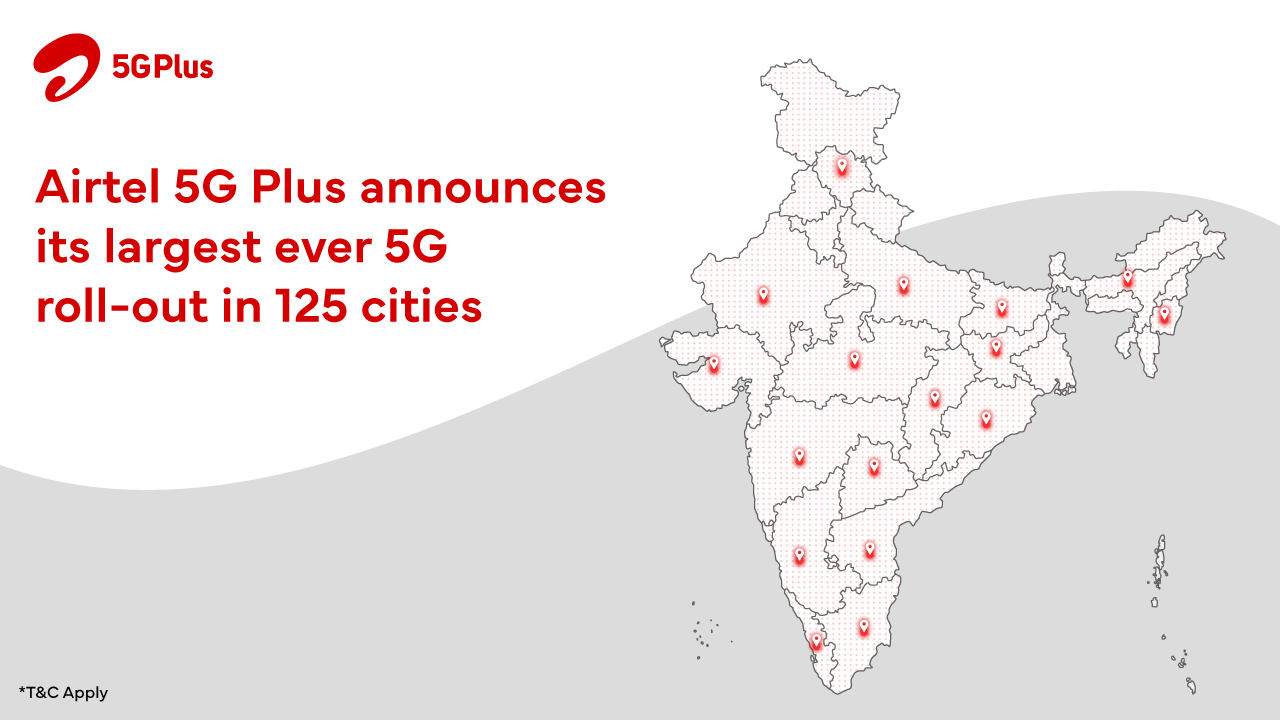
NEW DELHI: Bharti Airtel, India’s telecommunications services provider, today announced the launch of its ultra-fast 5G services in 125 cities. Airtel 5G Plus service is now available to customers in over 265 cities in the country.
Airtel 5G Plus has three compelling advantages for customers. First, it runs on a technology that has the widest acceptance in the world with the most developed ecosystem. This ensures that all 5G smartphones in India seamlessly work on the Airtel network. Second, the company promises to deliver the best experience – between 20 to 30 times higher speeds than today coupled with brilliant voice experience and super-fast call connect. Finally, Airtel 5G Plus network will also be kinder to the environment with its special power reduction solution. Powered by the reliable Airtel network infrastructure, Airtel 5G Plus will provide superfast access to High-Definition video streaming, gaming, multiple chatting, instant uploading of photos et all.
Commenting on the launch, Randeep Sekhon, CTO, Bharti Airtel said, “5G has revolutionized the world of internet, ushering new era of connectivity and communications that will prove to be a game-changer for the country. At Airtel, we remain committed to delivering the highest quality of network and service to our customers as we roll-out 125 more cities today. Airtel was the first in the country to offer 5G services in October 2022, and today’s mega launch is our promise to connect every Airtel customer in the country with ultra-fast Airtel 5G Plus. Our 5G rollout is on track to cover all towns and key rural areas by March 2024.”
Airtel 5G Plus service availability will continue to rapidly expand – including service in all towns and villages in the country soon – as the company is working towards offering nationwide coverage. Airtel is now offering its 5G services in every major city from the upper northern city of Jammu to the southern tip of Kanyakumari.
In the last one year, Airtel has demonstrated the power of 5G with a host of powerful use cases that will change the way customers lead their lives and do business. From India’s first live 5G network in Hyderabad to India’s first private 5G network at the BOSCH facility in Bengaluru to partnering with Mahindra & Mahindra to make its Chakan manufacturing facility, India’s first 5G enabled auto manufacturing unit, Airtel has been at the forefront of 5G innovation.
5g
Apple rolls out beta programme for iPhones to enable 5G services

NEW DELHI: Apple Inc has rolled out a beta programme to enable 5G on Apple devices as the upgrade lets users try out pre-release software.
This software upgrade enables 5G access on Apple devices, as and when service providers Jio, Airtel and Vodafone enable 5G network access, sources said.
Apple Users have to enrol for the Beta Programme on the website, install a profile and download the software.
Jio users using iPhone 12 and above, in cities where JioTrue5G has been rolled out, will be invited to the Jio Welcome Offer. Jio Welcome Offer provides unlimited 5G data at up to 1 Gbps speed to users at no additional cost. However, there is a condition that prepaid users must be on active Rs 239 and above plan. All Postpaid users are eligible for this trial.
Airtel is not providing any special 5G offer like Jio to their users. In the cities/areas in which the Airtel 5G network has been launched, users can trial 5G services as a part of their existing plan, once they have updated the latest Apple Beta software.
While an email sent to Apple did not solicit an immediate response, the firm had last month stated: “We are working with our carrier partners in India to bring the best 5G experience to iPhone users as soon as network validation and testing for quality and performance is completed. 5G will be enabled via a software update and will start rolling out to iPhone users in December”.
Airtel and Jio customers on iPhone 14, iPhone 13, iPhone 12 and iPhone SE (3rd generation) models can experience 5G as part of Apple’s iOS 16 Beta Software Program. The Apple Beta Software Program is open to anyone with a valid Apple ID who accepts the Apple Beta Software Program Agreement during the sign-up process.
If a user has an iCloud account, that is an Apple ID, it is recommended they use that. If they do not have an iCloud account or any other Apple ID, they can create one.
Customers who want to try the beta software should back up their iPhones before installing the beta software. It is recommended to install the beta software only on non-production devices that are not business-critical. Users can also provide feedback to Apple on quality and usability, which helps Apple identify issues, fix them, and make Apple software even better.
The iOS beta comes with the built-in Feedback Assistant app, which can be opened from the Home screen on the iPhone or iPad or from the Dock on the Mac.
Source: Press Trust of India
5g
Nokia wins multi-year deal with Reliance Jio India to build one of the largest 5G networks in the world
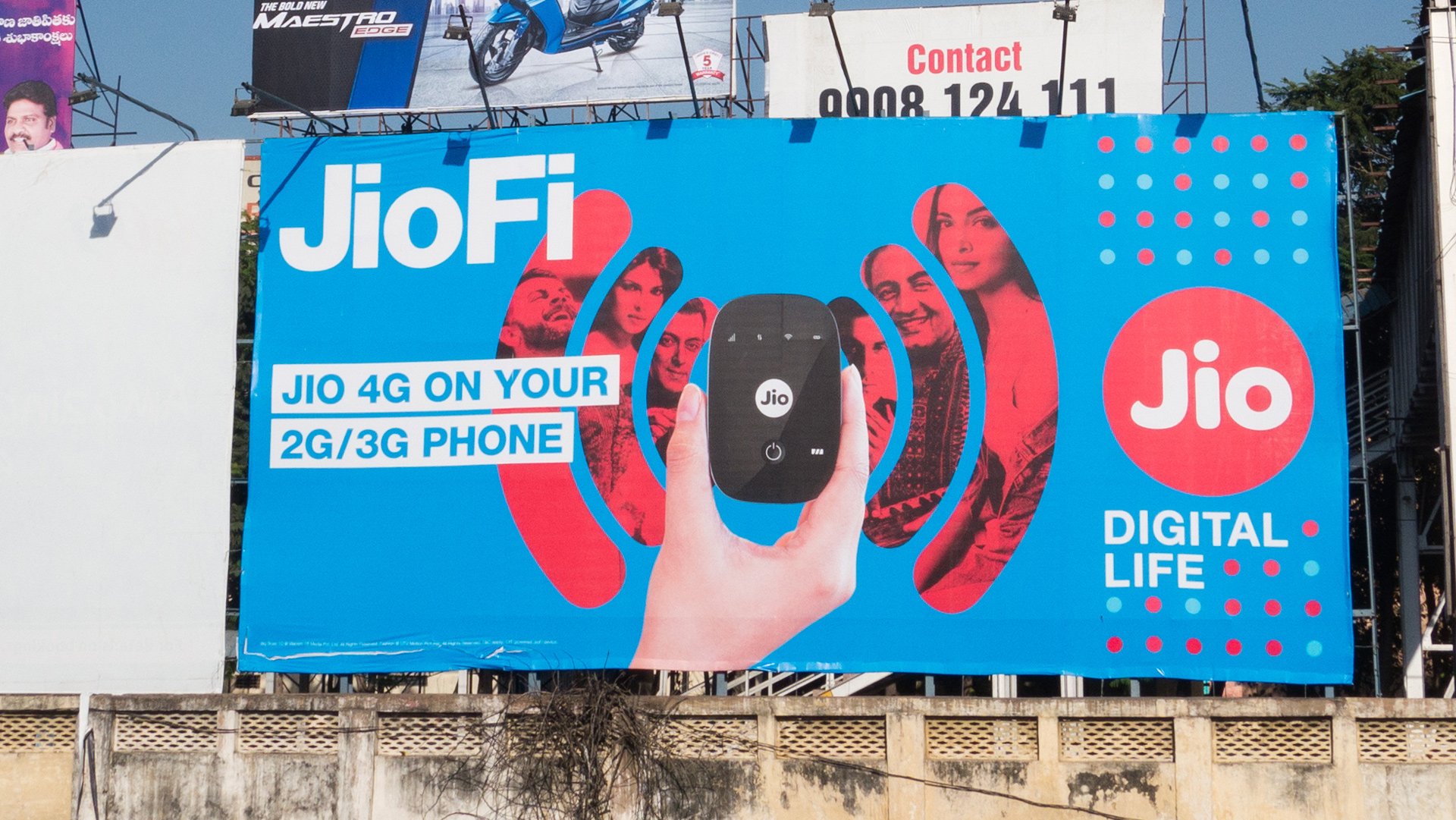
NEW DELHI: Nokia has announced that it has been selected as a major supplier by Reliance Jio to supply 5G Radio Access Network (RAN) equipment from its comprehensive AirScale portfolio countrywide in a multi-year deal. Reliance Jio is India’s number one mobile operator and has one of the largest RAN footprints in the world.
Under the contract, Nokia will supply equipment from its AirScale portfolio, including base stations, high-capacity 5G Massive MIMO antennas, and Remote Radio Heads (RRH) to support different spectrum bands, and self-organizing network software. Reliance Jio plans to deploy a 5G standalone network which will interwork with its 4G network. The network will enable Reliance Jio to deliver advanced 5G services such as massive machine-to-machine communications, network slicing, and ultra-low-latency.
Akash Ambani, Chairman Reliance Jio, commented: “We are pleased to be working with Nokia for our 5G SA deployment in India. Jio is committed to continuously investing in the latest network technologies to enhance the experience of all of its customers. We are confident that our partnership with Nokia will deliver one of the most advanced 5G networks globally.”
Pekka Lundmark, President and CEO at Nokia stated: “This is a significant win for Nokia in an important market and a new customer with one of the largest RAN footprints in the world. This ambitious project will introduce millions of people across India to premium 5G services, enabled by our industry-leading AirScale portfolio. We are proud that Reliance Jio has placed its trust in our technology and we look forward to a long and productive partnership with them.”
Nokia has a long-standing presence in India. This new deal will mean that Nokia is now supplying India’s three largest mobile operators.





